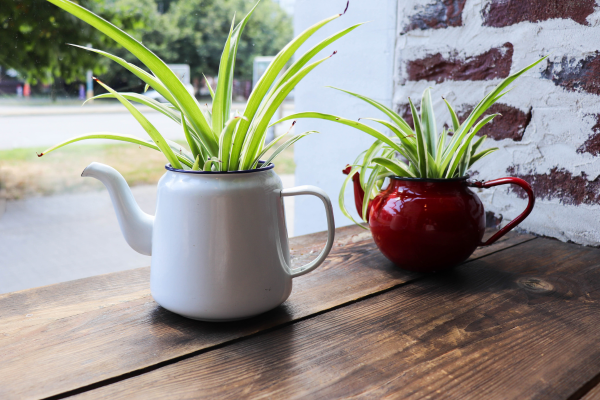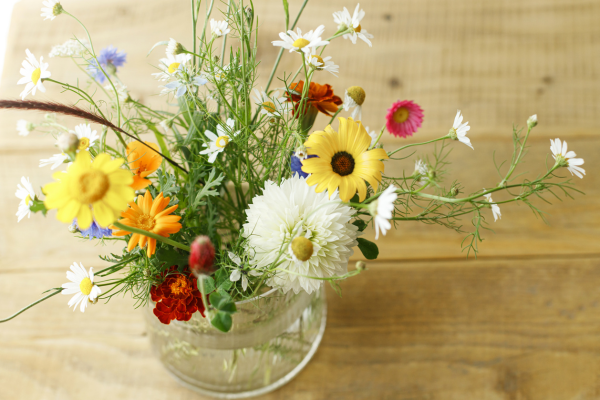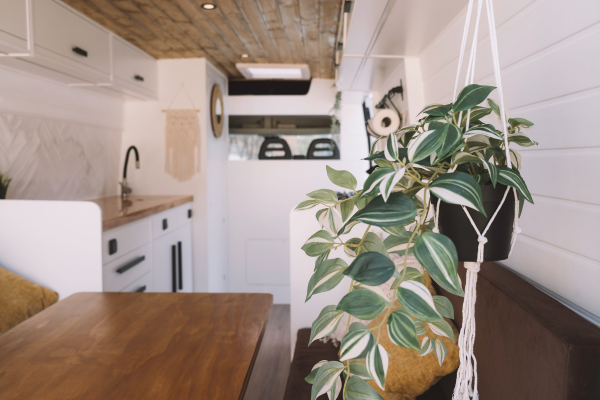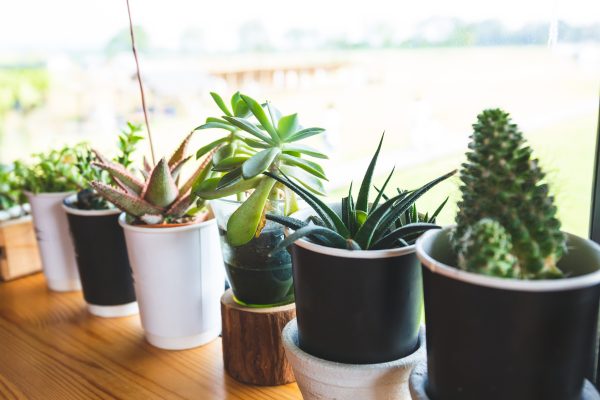
 The luxury of being in the great outdoors means we can roam wherever we want. We can park in the middle of a forest surrounded by trees yet still feel the need for green inside. If you’re a plant lover, you get it. When I first embarked on the nomadic life, one of the biggest tasks was figuring out how to bring my plants with me. Of course, my hubby doesn’t get it, but he goes along with it. Seriously, does he have a choice?
The luxury of being in the great outdoors means we can roam wherever we want. We can park in the middle of a forest surrounded by trees yet still feel the need for green inside. If you’re a plant lover, you get it. When I first embarked on the nomadic life, one of the biggest tasks was figuring out how to bring my plants with me. Of course, my hubby doesn’t get it, but he goes along with it. Seriously, does he have a choice?
There’s something about plants that makes any place feel like home, no matter where you park it. After a day of battling traffic, hooking up hoses, and fighting off mosquitoes, the solace of plants somehow eases the stress. Did you know indoor plants can help reduce stress? Plants have calming influences, helping us feel relaxed, improving our everyday mood.[1]
Author Peter Bongiorno, in his book Holistic Solutions for Anxiety & Depression in Therapy, mentions touching soft and smooth plants can make you feel calmer. Caring for plants can increase compassion, improve relationships, and even make us more caring toward others.[2]

I love having freshly cut flowers at the front door to greet me; they’re a beacon of happiness, especially on a rainy day. According to a study in Sage Journals, flowers are powerful positive emotion inducers, with immediate and long-term effects on emotional reactions, mood, social behaviors, and even memory.[3] And listen up, mates, if you’re in the doghouse, giving flowers can elicit a true Duchenne smile —practicalpie.com/duchenne-smile/ — improving your partner’s mood for up to three days.
Plants are living filters. They can remove toxins such as formaldehyde, filter airborne microbes, and increase humidity. A 1989 NASA study on Sick Building Syndrome found adding plants to buildings helped remove toxic substances, pathogenic viruses, bacteria, and other organic chemicals, making employees healthier.[4] Peace lily, English ivy, and spider plants were shown to remove up to 87% of air toxins within 24 hours under experimental conditions. [5],[6]
Studies have also shown houseplants can help remove dust, [7]which is quite helpful for those with allergies and breathing problems, and maybe save a few Swiffer cloths from the landfill. One study found a 20% reduction in dust with indoor plants and increased humidity.[8] For us nomadic working warriors, feeling sleepy in the afternoon or struggling to concentrate while working can be remedied by adding a couple of plants. Numerous studies show plants help with concentration, create happier moods, improve job satisfaction, and strengthen relationships. Small plants like cacti or those in a terrarium are perfect for the desk. Add a little museum putty to keep them in place on the road.

Plants in the bedroom? Definitely! Plants like orchids, succulents, snake plants, and bromeliads create oxygen at night, helping you sleep better. I’m still searching for the perfect plants to clear the air in the bathroom. For now, I am sticking to Poo-Pourri.
If you are heading to Canada, Mexico, or Alaska, your precious plant babies will need a plant sitter. The Canadian Food Inspection Agency prohibits plants due to them potentially harboring invasive species and plant pests. This includes homemade articles made from plants or wood, houseplants, plant cuttings, seeds, and bulbs.[9]
Mexico prohibits soil, plants, wild plants, seeds, seedlings, fresh plant parts, or propagation materials (seeds, bulbs, slips, buds, stakes, etc.). However, herbs like thyme and dried medicinal herbs are permitted.[10]
Even if you’re lucky enough to smuggle your houseplants across borders (I hope you don’t), they will be confiscated on the way back into the U.S. Domestically, there doesn’t seem to be restrictions moving from state to state.[11] However, you should check with the National Plant Board for regional regulations.[12]

Managing houseplants, or should we say RV plants, in limited floor space can be challenging. However, I’ve found a solution in the form of hanging planters that have no drainage holes and include chains for hanging. This setup prevents any water leakage during watering, and it allows the plant to be moved around. When parked, I hang them at a specific height; when on the move, I lower the chains so they snugly fit within the window and sofa area, preventing any swaying.
Another great trick is to gather your plants and place them in the kitchen sink. This works well to collect any dirt that may fall during travel. Wall-mounted planters are another excellent option.
Living the RV life with plants isn’t just possible; it’s an adventure! Each plant adds a little piece of home wherever you park. So, get creative, adventure on, and keep those happy green companions with you on the road.
[1] https://www.nbcnews.com/better/better/how-nature-can-solve-life-s-most-challenging-problems-ncna749361
[2] https://ellisonchair.tamu.edu/health-and-well-being-benefits-of-plants/#.V7dBbpMrLBI
[3] https://journals.sagepub.com/doi/full/10.1177/147470490500300109
[4] https://ntrs.nasa.gov/archive/nasa/casi.ntrs.nasa.gov/19930073077.pdf
[5] https://www.farmersalmanac.com/air-purifying-plants
[6] https://spinoff.nasa.gov/Spinoff2007/ps_3.html
[7] https://www.sciencedirect.com/science/article/abs/pii/1352231095004653
[8] https://www.sciencedirect.com/science/article/abs/pii/1352231095004653
[9] https://www.cbsa-asfc.gc.ca/services/fpa-apa/bringing-apporter-fpa-eng.html 2024
[10] https://www.gob.mx/cms/uploads/attachment/file/291283/Listado_mercancias_permitidas_y_prohibidas.pdf
[11] https://ask.usda.gov/s/article/I-am-moving-traveling-from-one-State-to-another-and-want-to-bring-some-houseplants-with-me-Do-I-need-a-permit
[12] https://www.nationalplantboard.org/members.html
| Karen Langston is a full time RVer, certified mind-body specialist, and holistic orthomolecular nutritionist specializing in functional modalities to tame the belly storm. She loves hitting the road in search of Class A backroads, good food, and quirky adventures. Join her adventure at https://karenlangston.substack.com/about |


Leave a Reply